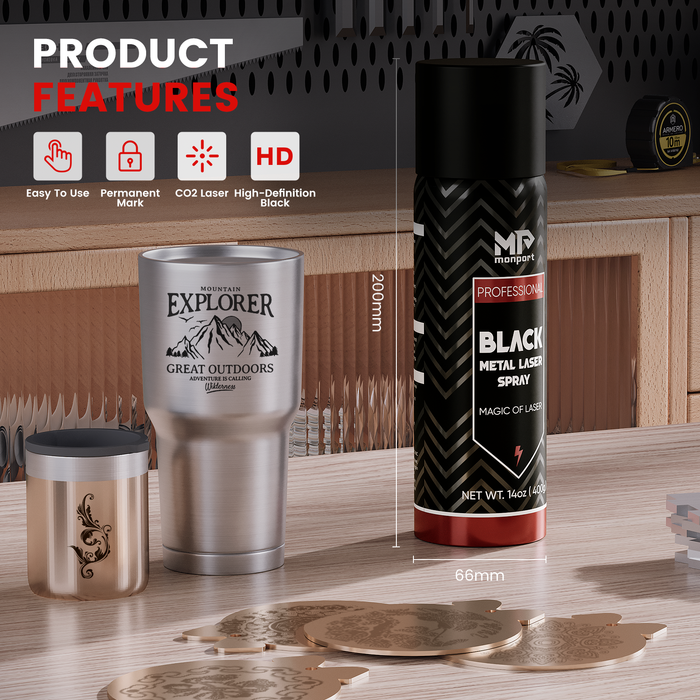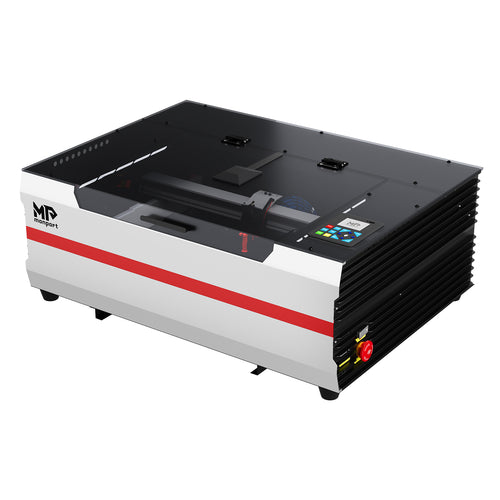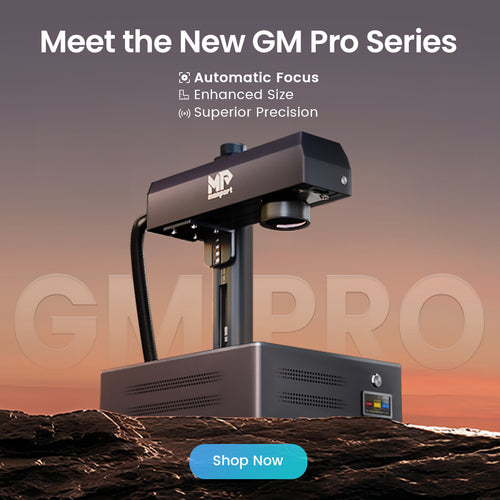Etching Versus Engraving: What’s the Real Difference?
Engraving and etching on acrylic are both popular techniques for adding intricate designs, text, or patterns to various materials. While they may appear similar on the surface, there are distinct differences—especially when considering etching vs engraving. From depth and labor to equipment and cost, understanding these distinctions helps creators select the right method for their goals. This article explores why engraving tends to be more expensive than etching, providing insights into the factors contributing to this cost disparity, and how black laser marking spray can be used to enhance results in both methods. When you explain the difference between engraving and etching, it becomes easier to choose the right method. Understanding the difference between engraved and etched surfaces helps you choose the right finish for your project goals.
In addition, recognizing the difference between etched and engraved surfaces is key when planning designs for long-term use. Many creators comparing etched vs engraved results notice clear variations in depth, texture, and durability, which further highlights etching vs engraving as more than just a terminology issue.
When selecting a laser etching machine, understanding the differences between engraving vs etching is crucial to making an informed decision that suits your specific needs and budget. The type of lazer engravers you choose, such as a Black & Decker laser engraver under $200 or a Black & Decker laser engraver under $600, can significantly impact both the cost and quality of your laser-engraved and laser etched items. Professionals often explain the difference between engraving and etching before recommending entry-level or advanced machines.
If you're searching for laser engravers near me, knowing these key distinctions and price points of various lazer engravers will help you find the right equipment for your projects, ensuring high-quality laser-etched results without exceeding your budget. Many beginners ask experts to explain the difference between engraving and etching before investing in a machine. It's important to assess the difference between engraved and etched finishes when selecting a machine and planning your design, especially when comparing etched vs engraved samples side by side.
Read More: Personalize Your Game: Laser Engraving Baseball Gloves with the Monport CO2 Laser Engraver Machine
Etching vs Engraving Explained for Beginners
If you're new to laser crafting, the etching vs engraving debate can be overwhelming. Though often used interchangeably, these terms refer to very different processes.
-
Engraving physically removes material, creating deep, permanent marks.
-
Etching, in contrast, alters only the surface, usually through heat or chemical reaction, making it faster but less invasive.
The etching vs engraving decision often comes down to your intended application. Engraved designs are more durable and ideal for high-wear items, while etched surfaces are preferred for decorative work or when working with delicate materials like acrylic or glass. Observing etched vs engraved finishes in real-world use further helps explain the difference between engraving and etching for practical applications.
Labor and Time Considerations

Engraving is a labor-intensive process that often requires significant manual intervention. Skilled engravers must carefully operate machinery and oversee the entire process to ensure accuracy and quality. This highlights the difference between etched and engraved techniques in terms of time commitment and craftsmanship, a key point when discussing etching vs engraving with clients.
Etching, particularly when done using modern laser technology, can be more automated and less labor-intensive. Once the design is set up, the laser-etched process can proceed relatively quickly with minimal manual intervention. Here again, the difference between engraved and etched methods is clear: one involves material removal, the other surface alteration. This contrast is often emphasized when professionals explain the difference between engraving and etching during consultations.
Equipment and Maintenance Requirements
The choice between etching vs engraving also affects equipment and maintenance costs. Engraving equipment, such as a CO2 laser engraver machine or fiber laser machine, can be costly to purchase and maintain. These laser engravers require regular servicing and upkeep to ensure optimal performance and precision. The difference between engraved and etched applications may also affect how often you need to calibrate or clean your machine, reinforcing the etched vs engraved comparison from a maintenance standpoint.
Laser etching machine equipment also requires investment but may have lower ongoing maintenance costs compared to traditional engraving machinery. Laser systems can be highly efficient and precise, making them a popular choice for etching applications where surface detail is prioritized over depth.
Materials and Versatility

Engraving is often preferred for its ability to create deep, permanent markings on a wide range of materials, including metals, plastics, and wood. The physical removal of material lends engraved items a sense of durability and longevity. This highlights a major difference between engraved and etched techniques—the level of permanence and material disruption. It’s beneficial to explain the difference between engraving and etching to ensure users select the correct technique for their materials. The difference between etched and engraved finishes is particularly noticeable when comparing projects that require long-term durability versus aesthetic appeal.
Etching is well-suited for creating intricate designs on flat surfaces, particularly on materials like glass, acrylic, and certain metals. While etched markings may be less durable than engraved ones, they can still be highly detailed and visually striking. Comparing etched vs engraved samples helps designers visualize the outcome before committing to a method.
Customization and Complexity

Engraving offers unparalleled customization options, allowing for deep, three-dimensional designs and texturing. This level of complexity often commands higher prices, especially for bespoke or intricate projects. These factors further underline the etching vs engraving cost differences.
Etching is more commonly used for surface-level designs and may have limitations in terms of depth and complexity. While it's suitable for many applications, it may not always meet the requirements of highly detailed or custom projects that demand engraved depth.
Ignite Your Imagination with the Monport GI60 Fiber Laser Engraver

Are you prepared to elevate your laser engraving endeavors to new heights with lazer engravers? Look no further than the Monport GI60 Fiber Laser Engraver. This state-of-the-art machine is unrivaled in terms of its cutting-edge technology, unmatched performance, and innovative features.
Vivid Color Marking and Unparalleled Precision
Immerse yourself in a realm of precision and creativity with Monport's 60W JPT MOPA fiber laser marking machine. This powerhouse enables precise and vibrant color marking on stainless steel, as well as high-contrast engraving on anodized aluminum. The adjustable pulse frequency and width grant you the flexibility to explore boundless design possibilities. With the GI60, every minute detail comes to life, making it easy to demonstrate etched vs engraved results with exceptional clarity.
Integrated Innovative Design
Monport's GI60 sets a new benchmark in design. It boasts a lighter weight, smaller size, and a sleek appearance without compromising performance. The integrated fiber laser design not only enhances portability but also ensures a seamless user experience. It’s ideal for users who want to explain the difference between engraving and etching while demonstrating real-world applications of etching vs engraving using a laser etching machine.
Electric Lifting Focus for Precision
Attaining flawless engraving has never been simpler with the GI60's electric lifting focus mechanism. The concealed lifting motor guarantees smooth operation, resulting in optimal marking results for both etched and engraved designs.
LightBurn Compatible Workflow
Easily integrate your GI60 with Monport's LightBurn software and unlock a world of boundless creativity. LightBurn offers a user-friendly interface, intuitive controls, and a wide array of customizable features. This setup is perfect for users comparing the difference between engraved and etched outputs when experimenting with design settings and black laser marking spray.
Advanced Heat Dissipation Technology
Monport recognizes the importance of consistent performance. The GI60's built-in air cooling system and unique side panel openings effectively dissipate excess heat, ensuring uninterrupted productivity for both engraving vs etching tasks.
Meticulous Attention to Detail
Every aspect of the GI60 is designed with precision and user safety in mind. The anodized aluminum oxide casing showcases durability, while dust shields help maintain long-term performance—whether producing etched vs engraved work repeatedly.
FAQs
1. What is the main difference between engraving and etching?
When you explain the difference between engraving and etching, engraving removes material to create deep, permanent marks, while etching only affects the surface. This core distinction defines etched vs engraved results in durability and depth.
2. Why is engraving usually more expensive than etching?
The higher cost comes from labor, equipment, and time. Engraving requires precision machinery and skilled operation, which clearly shows the difference between engraved and etched processes in pricing.
3. Which is better for acrylic: etched vs engraved?
For durability, engraved acrylic performs better. For decorative purposes, etched acrylic is often preferred. Comparing etched vs engraved samples helps clarify etching vs engraving choices.
4. How does black laser marking spray help both methods?
Black laser marking spray improves contrast and visibility, making both etched and engraved designs stand out while clearly showing the difference between etched and engraved finishes.
5. Can one machine handle both engraving vs etching?
Yes, machines like the Monport GI60 are designed to handle both engraving vs etching efficiently, making them ideal for users learning to explain the difference between engraving and etching.
Conclusion
Choosing between etching vs engraving techniques depends on your goals, materials, and budget. Engraving offers more depth and durability, while etching provides efficiency and fine detail. Understanding the difference between engraved and etched results ensures better project outcomes. The Monport GI60 Fiber Laser Engraver supports both methods, making it a powerful solution for creators who need flexibility and precision when working with a laser etching machine.
Read More: How Much Can You Make a Year with a Laser Engraving Business?
Unlock your creative potential with the Monport GI60—designed for both engraving and etching excellence. Whether you're creating personalized gifts, branding products, or launching a laser business, knowing how to explain the difference between engraving and etching will help you make confident, informed decisions.
Ready to experience the power of Monport GI60? Get yours today and unlock your full creative potential! Use code BESTMP10 at checkout – click here to shop now!










